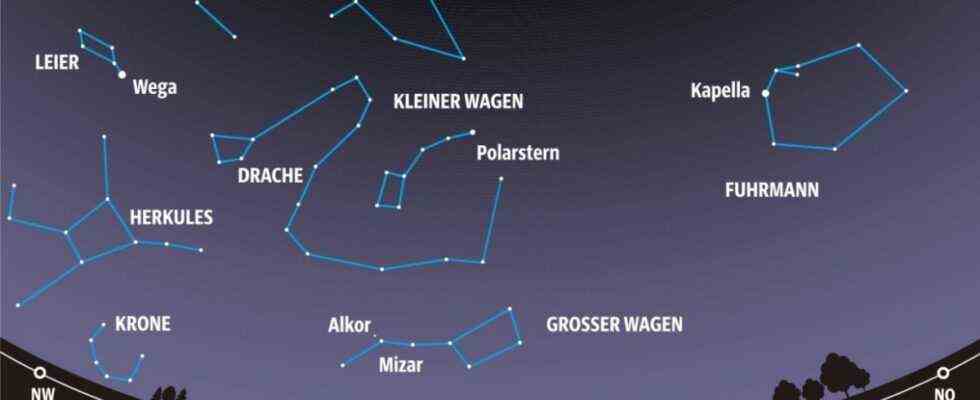Highlight: The monster is difficult to see, deep over the southern horizon it glows very faintly. This figure is called whale, but the name is deceptive. Even the Babylonians did not see it as a whale in the zoological sense, but as a dragon. The Arabs called the star constellation “Elkaitos” (monster) and the Greeks called it the monster that once drove its mischief off the shores of Ethiopia and almost devoured the king’s daughter Andromeda. A star named Mira belongs to the picture, which means something like “the miraculous”. In fact, Mira has an astonishing property: In the course of a good 330 days, it changes its brightness, whereby it shines at least a thousandth as weakly as at the maximum.
During the on-phase, Mira can be seen with the naked eye, in the off-phase, however, only in the telescope. The last maximum of Mira was predicted for last August. But what is behind the strange behavior that the East Frisian pastor David Fabricius was the first to discover in 1596? Mira, around 400 light years from Earth, is a red giant star that is constantly pulsing. The gas ball can expand to a diameter of 550 million kilometers and shrink to 460 million kilometers. This changes the temperature of the star – and ultimately causes its brightness to fluctuate.
Stars and constellations: In addition to the whale, the zodiacal images Aquarius and Capricorn stand deep in the south. Fomalhaut flashes over the horizon in the Southern Fish. High in the south, Pegasus is emblazoned with the Andromeda star chain attached. While the bull enters the arena in the east, the stars of the summer triangle gather in the west with Atair in the eagle, Deneb in the swan and Vega in the lyre. Hercules shines deep in the northwest, while Kapella im Fuhrmann shines in the northeast. The Big Dipper curves just above the north point.
Planets, moon, meteors: Only specialists will spot Mercury in the early November morning in the east, Mars remains invisible. Venus, on the other hand, cannot be overlooked as a magnificent evening star in the southwest. Jupiter and Saturn, both in Capricorn, can now also be easily recognized in the southern evening sky. Star friends should note November 8th in their calendars: around 6 p.m., all three planets and the narrow crescent moon can be found deep in the south. The new moon is on the 4th, the first quarter on the 11th, the full moon on the 19th and the last quarter on November 27th. In the night of November 17th the Leonids reach their maximum, but more than 15 shooting stars per hour will not flash, especially since the moonlight disturbs the observation.

